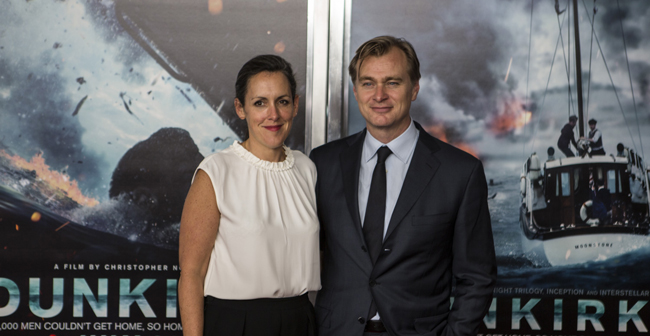Culture
 Photo: Ryan Hill
Photo: Ryan Hill
Christopher Nolan Returns with Historically Significant Dunkirk
July 19, 2017 @ 12:00am
The National Air and Space Museum hosted a special screening of Dunkirk on Wednesday with director Christopher Nolan in attendance.
“It took me a long time to be ready to make this film as a craftsman; I didn’t want to take it on until I had a lot of experience,” Nolan said, answering a question from moderator Jake Tapper, a CNN correspondent.
Nolan’s harrowing retelling of the Battle of Dunkirk is his most mature film. The normal dramatic, emotional overtones and unbridled patriotism that go hand in hand in other war films are stripped away.
Dunkirk doesn’t noticeably attempt to sway your feelings in one direction about the transpiring events; it’s far from heavy handed. And though Hans Zimmer’s score occasionally rings a triumphant tone during high points, it’s best use is to punctuate visceral action scenes on ground, at sea and in air.
In Nolan’s traditional nonlinear style, we get a story from each of these perspectives during the film. All take place during a different time span on the battlefield: one week, one day and one hour, respectively.
When climactic moments from each vignette come to a crescendo, they’re edited closely together to reiterate that the miraculous evacuation at Dunkirk was not the doing of one person, one unit or even one moment, but a culmination of smaller efforts by people working together in the face of insurmountable odds. Although the characters in the film are entirely fictitious, they are based on firsthand accounts of survivors – real experiences from the battle.
Another impressive element of the film was how little CGI was used – something modern audiences aren’t used to seeing.
“There’s almost nothing in the film that’s completely CGI,” Nolan stated. “In fact, there’s nothing in the film that’s completely CGI.”
Even though they used thousands of extras, there’s still a sense of scale conveyed; and instead of CGI, matte painting backdrops were used. This, and elongated sequences with little to no dialogue, reinforce a “silent era” feel. As a result, Dunkirk is more experience and story-driven than character-driven.
An unsurprising standout is Nolan regular Tom Hardy, who delivers an almost entirely mute performance as a spitfire pilot. The spectacular air battle sequences are woven throughout, and may be some of the most incredible in cinema to date.
These particular moments are where the 70mm IMAX format clearly shines. Close up shots from the side of the wing, Hardy’s face, the controls and distant shots of Nazi fighter silhouettes give audiences a sense of claustrophobia and dread.
Nolan made a distinctive choice, which he reiterated in the Q&A after the showing, to not show Nazis; the film hardly even refers to them in passing. As a result, it becomes more about instinct and survival, and the Axis Powers are the subtle looming threat or force of nature, rather than sneering villains.
Historically, these troops did not encounter them face-to-face during this battle, so the point of view is accurate. The story of Dunkirk is something many Americans are unfamiliar with, and bringing this story to life for modern audiences was a goal of Nolan’s.
“It’s really about what we refer to as the Dunkirk spirit,” Nolan said. “It’s about community. We live in a time right now that perhaps prizes individuality at the expense of what we can achieve together.”
Dunkirk opens today.







